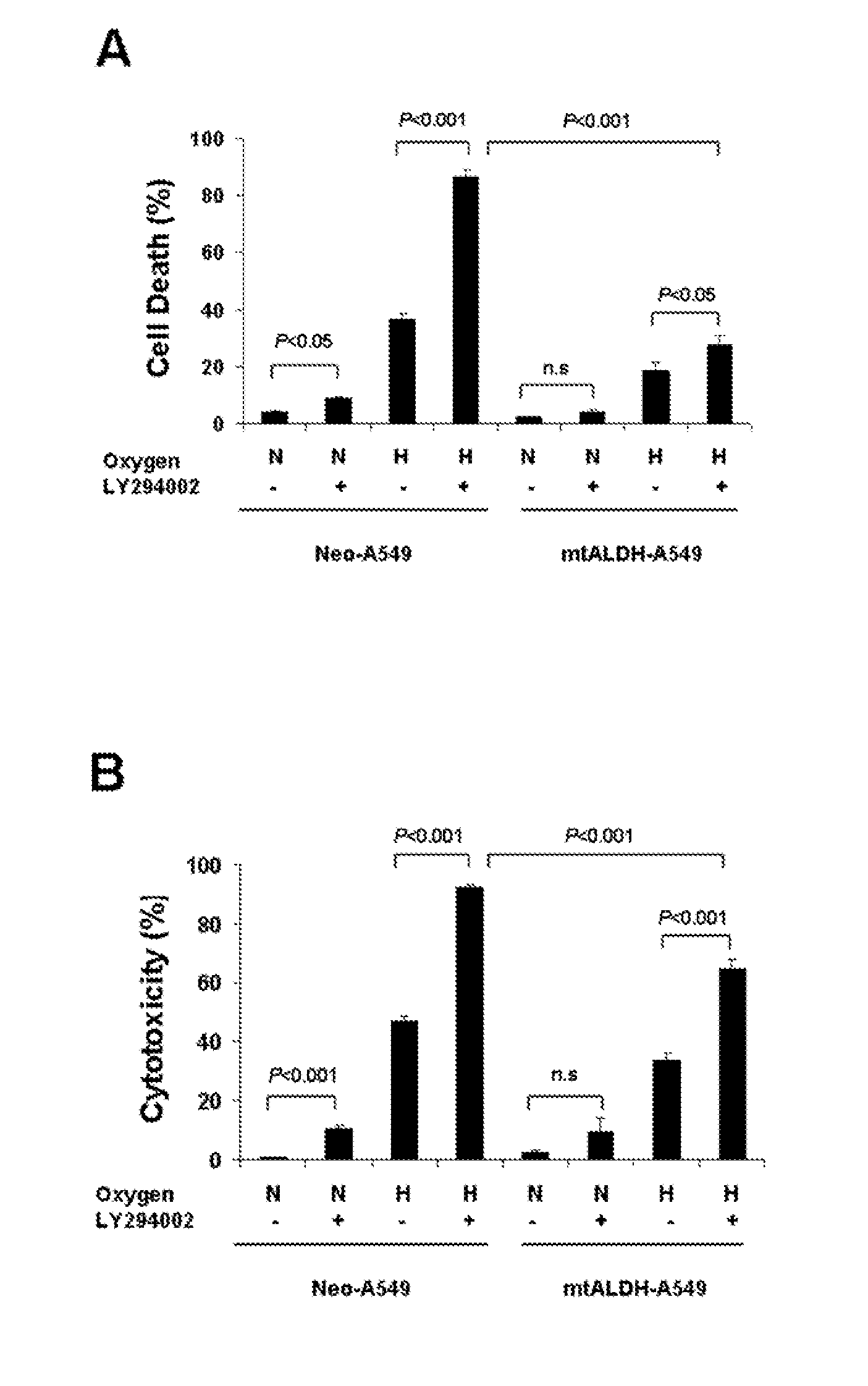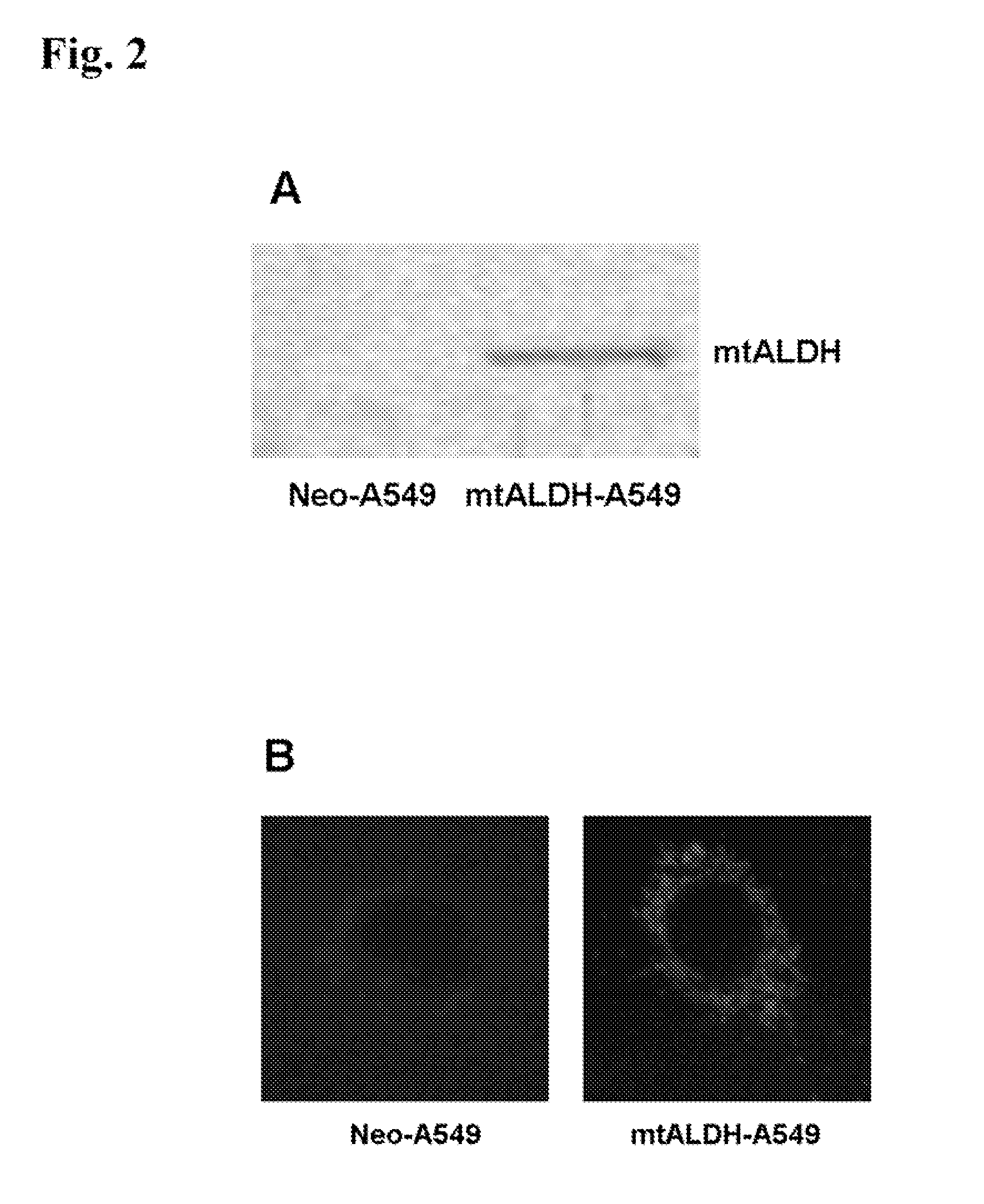Attenuation of hyperoxia-induced cell death with mitochondrial aldehyde dehydrogenase
- Summary
- Abstract
- Description
- Claims
- Application Information
AI Technical Summary
Benefits of technology
Problems solved by technology
Method used
Image
Examples
example 1
[0039] Materials and Methods
[0040] Oxygen Exposures: The use of animals in this study was approved by the Institutional Animal Care and Use committee, University of Missouri-Kansas City. The newborn rats at 4 days of age were randomly divided into two groups, room air (normoxia) and oxygen (hyperoxia) exposure groups according to our previous published procedure (34). The animals were housed in regular rat cages that were placed into Lucite chambers. The newborn rats in the chambers breathed either room air or humidified 95% oxygen. Oxygen concentration was monitored continuously with an oxygen analyzer. Dams were given food and water ad libitum, kept on a 12:12 hour on-off light cycle and fostered by rotating in and out of the chamber every 24 hours to avoid oxygen toxicity. At the designated exposure time points, the animals from both treatment groups were sacrificed by exsanguination after receiving intraperitoneal pentobarbital for anesthesia. Lung tissue from each group were c...
PUM
| Property | Measurement | Unit |
|---|---|---|
| Fraction | aaaaa | aaaaa |
| Fraction | aaaaa | aaaaa |
| Fraction | aaaaa | aaaaa |
Abstract
Description
Claims
Application Information
 Login to View More
Login to View More - R&D
- Intellectual Property
- Life Sciences
- Materials
- Tech Scout
- Unparalleled Data Quality
- Higher Quality Content
- 60% Fewer Hallucinations
Browse by: Latest US Patents, China's latest patents, Technical Efficacy Thesaurus, Application Domain, Technology Topic, Popular Technical Reports.
© 2025 PatSnap. All rights reserved.Legal|Privacy policy|Modern Slavery Act Transparency Statement|Sitemap|About US| Contact US: help@patsnap.com



